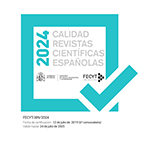"The Monstrous Angel: On the Figure of Mignon in Goethe’s" Wilhelm Meister’s Apprenticeship
Abstract
The article places the figure of Mignon in Goethe’s Wilhelm Meisters Lehrjahre in the context of the emergence of a new hermeneutic concept of “life” –“life” understood as an invisible force that shapes living creatures from within– at the end of the eighteenth century. Explicitly introduced as a “riddle”, Mignon’s enigmatic character is shown to embody problems of differentiation –man/woman, living/mechanical, spirit/letter– created by vitalism’s attempt to conceive of nature and culture as manifestations of a single “life”. The article suggests that Mignon’s function is not to symbolize a higher aesthetic or moral-political ideal but to mark out the limits of biological and social form in Goethe’s novel. The essay ends with critical reflections on Goethe’s attempt to turn Mignon’s normative eccentricity into the source of aesthetic fascination.
Downloads
Article download
License
In order to support the global exchange of knowledge, the journal Res Publica. Revista de Historia de las Ideas Políticas is allowing unrestricted access to its content as from its publication in this electronic edition, and as such it is an open-access journal. The originals published in this journal are the property of the Complutense University of Madrid and any reproduction thereof in full or in part must cite the source. All content is distributed under a Creative Commons Attribution 4.0 use and distribution licence (CC BY 4.0). This circumstance must be expressly stated in these terms where necessary. You can view the summary and the complete legal text of the licence.









